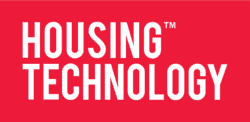The environmental impact of everyone’s power usage has become a high-profile issue. IT is also starting to receive attention as a major consumer of power. These issues have helped propel thin computing to the forefront, as a cost-effective solution with a very small environmental footprint.
What’s the difference in power consumption when moving to thin clients?
An efficient thin client can use as little as 6 watts of power. It will normally be attached to an application server which, with the latest energy-efficient servers, will add about 1 watt per user. In contrast, a typical two-year-old PC will use at least 70 watts.
In one year, with a normal 40-hour working week, an organisation with 1000 users using thin clients will:
- save approximately 90 per cent of its desktop power consumption;
- which equals 130,000 kilowatt/hours of electricity;
- which saves £9,000 from the power bill;
- and causes 56 tonnes of carbon dioxide emissions to be avoided.
Why is thin computing a better environmental alternative?
In addition to reducing power consumption, other environmental benefits of thin computing include:
- Less materials and energy are used in production compared with a PC;
- Thin clients are small in size and weight which reduces the cost and energy required for transportation;
- Less materials also means less to dispose of at the end of its life;
- Up to 90 per cent of the unit can be recycled;
- Low heat output means less power is needed for air-conditioning systems;
- Longer product lifespan compared with a PC;
- Thin clients can be managed remotely, so maintenance and software updates can be delivered without support staff needing to visit the users.
Are you merely displacing the energy consumption to the datacentre?
Thin computing does require additional server capacity in the datacentre, so datacentre power requirements will increase. However, the desktop power savings will far outweigh this increase. Servers are also becoming increasingly efficient as server vendors focus on reducing datacentre power requirements. Furthermore, virtualisation technology is significantly increasing server utilisation which minimises the number of servers required.
Why is thin computing better for recycling?
With an eight-year average lifetime, thin-client technology can act as a safeguard against obsolescence. New software can be deployed in the datacentre and delivered to the thin client, extending its working life. Also, servers are typically designed to be maintained so they too can have a long working life. The combination of a much longer life and fewer components means fewer parts to recycle and less e-waste.
David Angwin is director of marketing (EMEA) for Wyse Technology.

